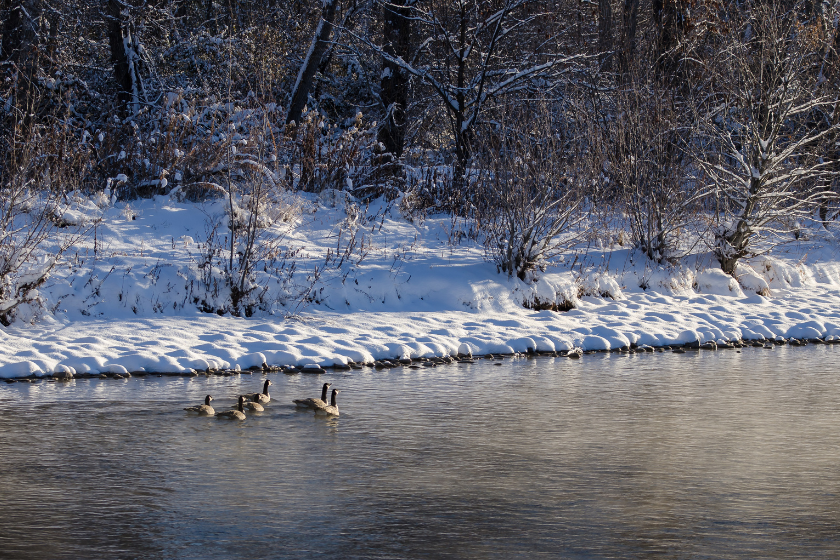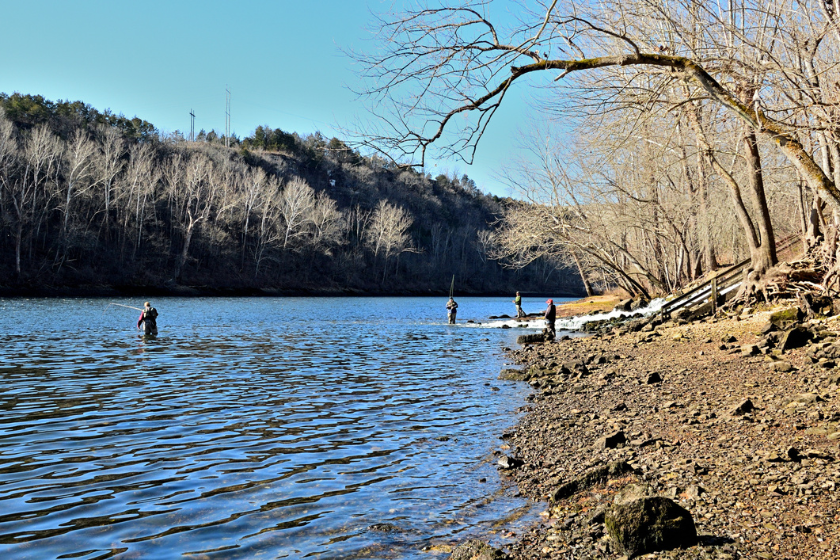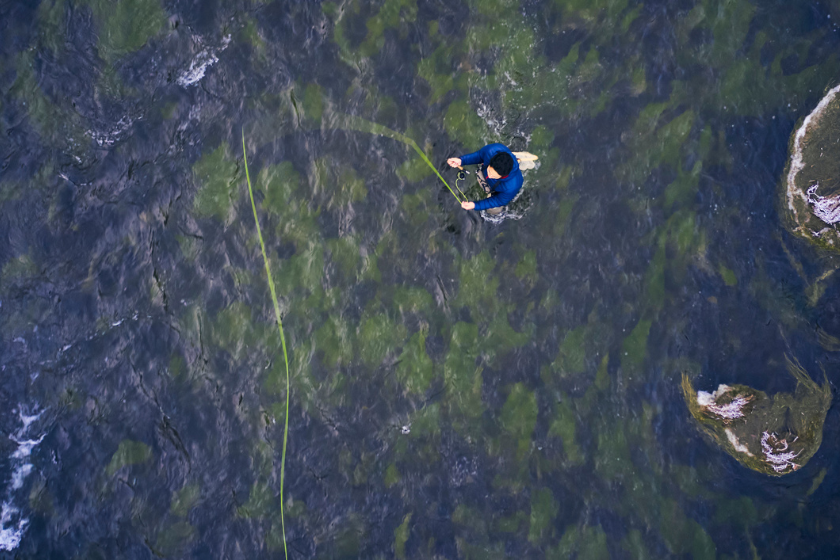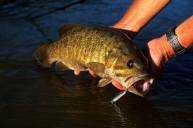Most people don't put away their fishing gear just because the water is getting cold. Dressing warmer and paying more attention to the conditions can go a long way towards salvaging an otherwise cold fishing season. However, staying safe in the water once the temperatures drop requires a little bit of extra preparation.
Even during the summer months, getting wet in your waders is no walk in the park—but the cold waters of fall and winter can be extremely dangerous. Getting wet any time the temperature is below 60 degrees can cause real problems, including hypothermia. Having some basic survival equipment on hand in the event of an emergency is certainly one of the keys to staying safe out on the water. But knowing what circumstances can create danger for the cold water angler means paying attention long before you step out the door.
Here are the five rules of cold water wading, all of which you should read about before your next excursion into any frigid liquid.
1. Have the Proper Equipment

There are several items that every cold water angler should have for the non-summer months. A wading staff (or stick, or rod; they're known by a few names) is the first line of defense for staying on your feet in water that is swift or murky. Felt wading boots are better in the slick conditions you may encounter on the stream or river, and many have stud-compatible options. A wading belt around your waist is a great way to keep water from entering, but only if worn properly. A good personal floatation device (PFD) is best when used in riskier waters where the flow is strong, and a rope, knife, and whistle are your last lines of defense if the worst happens and you find yourself stranded.
2. Fish With Friends

Even in a group, always notify someone that didn't accompany you of your location and planned duration out on the water, especially during a cold weather trip. Potentially dangerous situations can arise at a moment's notice, but being with a partner can make the difference between a scary situation and a deadly one. If you do fall in, a whistle attached to your waders can be used to alert your fishing companions. Also, a rope can save your life, or that of your fishing buddy, if it's readily available and employed the right way. Tailwaters below dams, rising waters, and water where the depth is in question are all things that need to be taken into account before entering the water.
3. Know the Four A's of a Rescue

Whether you are surfing, sailing, or wading in cold water (or any water for that matter), there's a common set of four steps for what to do in an emergency situation: Awareness, Assessment, Action, and Aftercare. It all starts with your awareness, or your ability to recognize an urgent situation and be able to act accordingly. A lot of this depends on your experience in cold water circumstances and previous knowledge of cold water rescue rules. Make an assessment, or informed judgment, as to what has happened and what your next move will be. The action is an attempt to stop, solve, or address the issue directly. And of course, the proper aftercare is important to stabilize and further protect someone until medical help arrives.
4. Wear the Proper Clothing

Dressing in layers is a common cold weather rule for any outdoors person, but when it comes to cold water wading it is even more important. A good pair of insulated waders is the starting point for any trip into the cold waters of fall or winter, but you still need the proper socks, gloves, hat, and other gear to keep you safe and warm. A breathable base layer (avoid cotton) is the starting point for staying warm. A good sweater and wading vest will give you freedom of movement and a way to wick away any moisture from the work of wading against the current or just walking to and from the stream. Since your feet and legs will be in the water most of the time it is imperative to keep them insulated from the cold.
5. Proper Planning

Understanding the difficulty of your ultimate destination based on its remoteness, phone service availability, the hiking or wading effort involved, and especially the water conditions that you will encounter needs to match to your personal fitness, medical risks, and wading experience. This includes checking the flow rates of the waters where you will fish, monitoring weather reports, and learning the temperatures that will dictate your decision to stay or cut the trip short for safety reasons. Calories and proper hydration are paramount to any outdoor activity, so plan ahead to have the right food and drink along with you as well. It all comes down to being prepared for the worst-case scenario and knowing what to do about it if it ever comes to pass.
READ MORE: The Best Ice Spikes & Traction For Shoes To Wear All Winter




